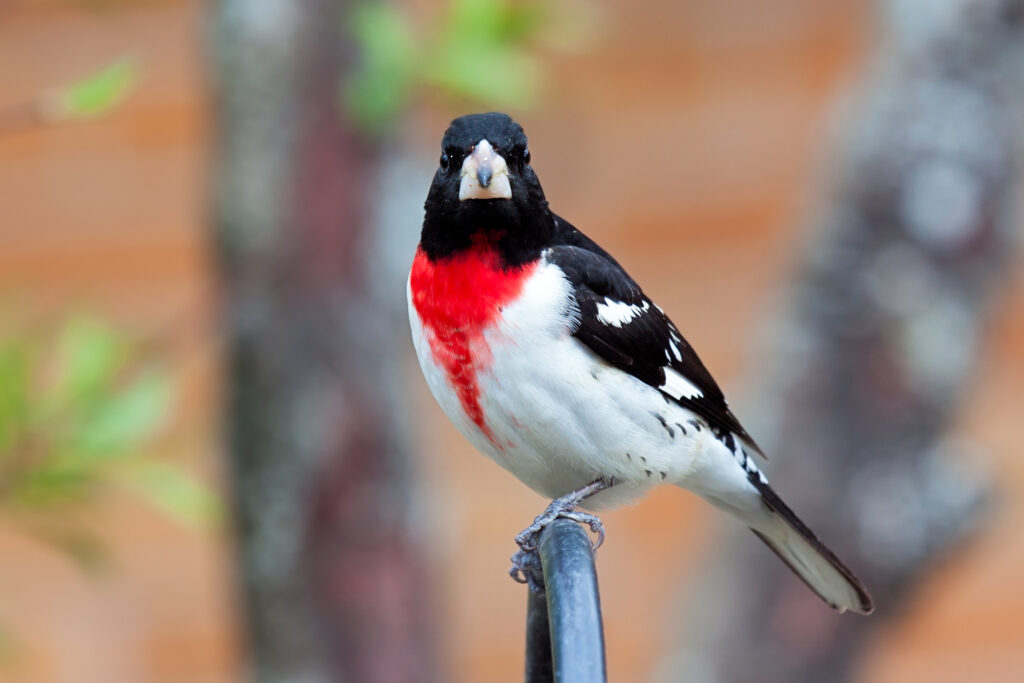Wisconsin is often called “America’s Dairyland” because it’s famous for its cheese and other dairy products. However, did you know Wisconsin is home to over 440 species of birds?
In this article, we’ll go through 25 of the most exciting birds to spot in the Badger State. We’ll also cover information on their measurements, where to find them, and more.
Let’s get started!
25 Birds to Spot in Wisconsin
Some of the birds we’re about to spotlight can be easily spotted as you’re walking around, whereas others may be a little more challenging to spot. Here are 25 bird species to look for in Wisconsin:
Red Birds in Wisconsin
Northern Cardinal

- Scientific Name: Cardinalis cardinalis
- Length: 8.3 to 9.1 inches
- Weight: 1.5 to 1.7 ounces
- Wingspan: 9.8 to 12.2 inches
The Northern cardinal has red plumage and a black face. You can find this mid-sized bird widespread across woodlands, suburban gardens, thickets, and most semi-open terrains east of Wisconsin.
This bird feeds on insects, seeds, and berries. You’ll spot Northern cardinals foraging on the ground or in trees. They love sunflower seeds and will go wherever birdfeeders are in search of that tasty treat.
Male Northern cardinals are so territorial that they’ll attack their own reflection. The female builds the nest, but both parents help feed the chicks.
Red-Headed Woodpecker
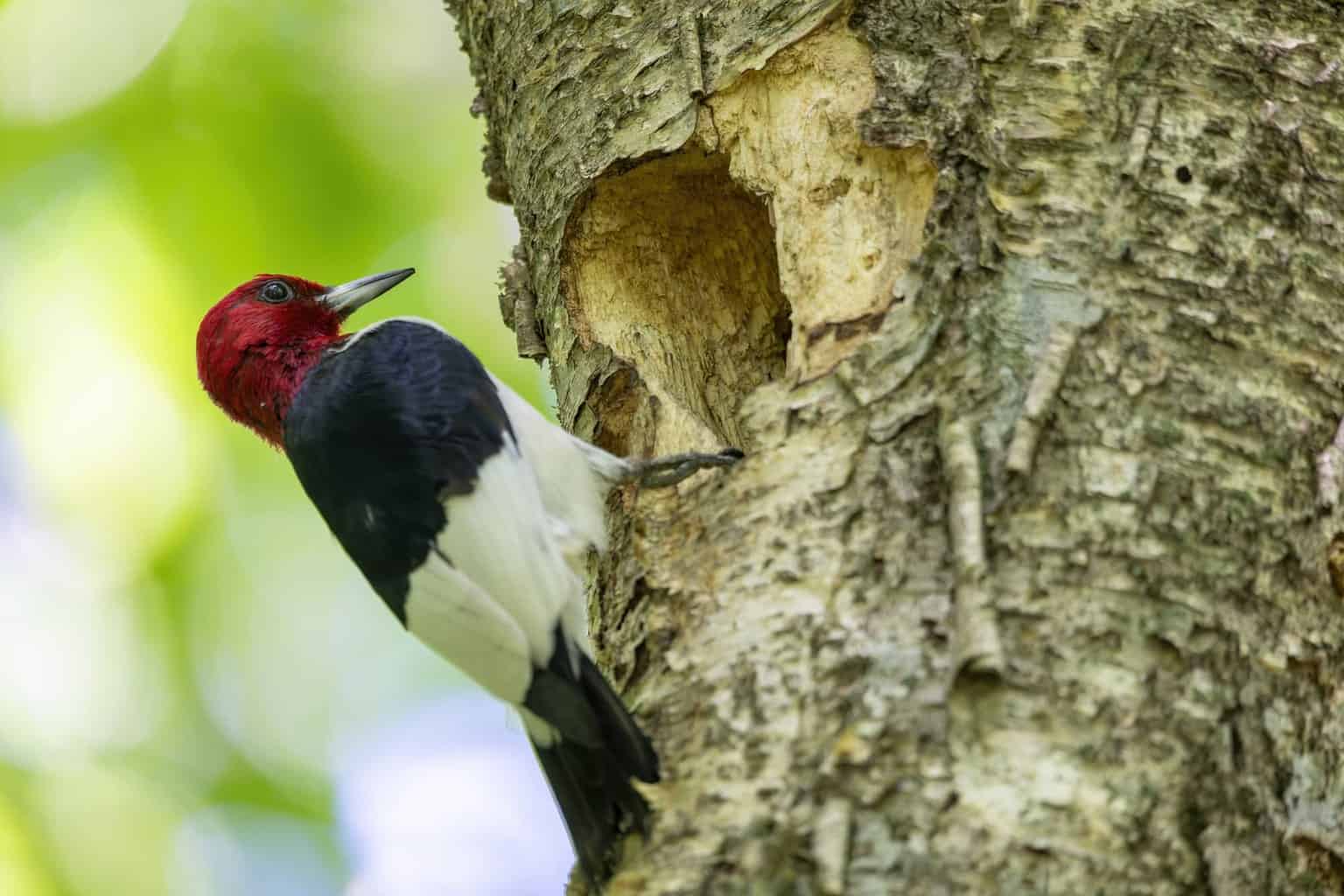
- Scientific Name: Melanerpes erythrocephalus
- Length: 7.5 to 9.1 inches
- Weight: 2 to 3.2 ounces
- Wingspan: 16.5 inches
Red-headed woodpeckers are distinguishable by their full, bright-red heads. They have black backs and white underparts. So, the contrast in colors makes them some of the most attractive birds to spot.
These birds were once common throughout the eastern states. Nowadays, their numbers are decreasing. This is mainly attributed to the lack of nesting sites because of dead tree harvesting and competition from starlings for tree cavities.
Red-headed woodpeckers are omnivorous. Their diet strictly consists of insects, some seeds, and berries.
The male picks a nesting spot and calls out for nearby females. The females signal their approval by tapping against the tree.
Pine Grosbeak
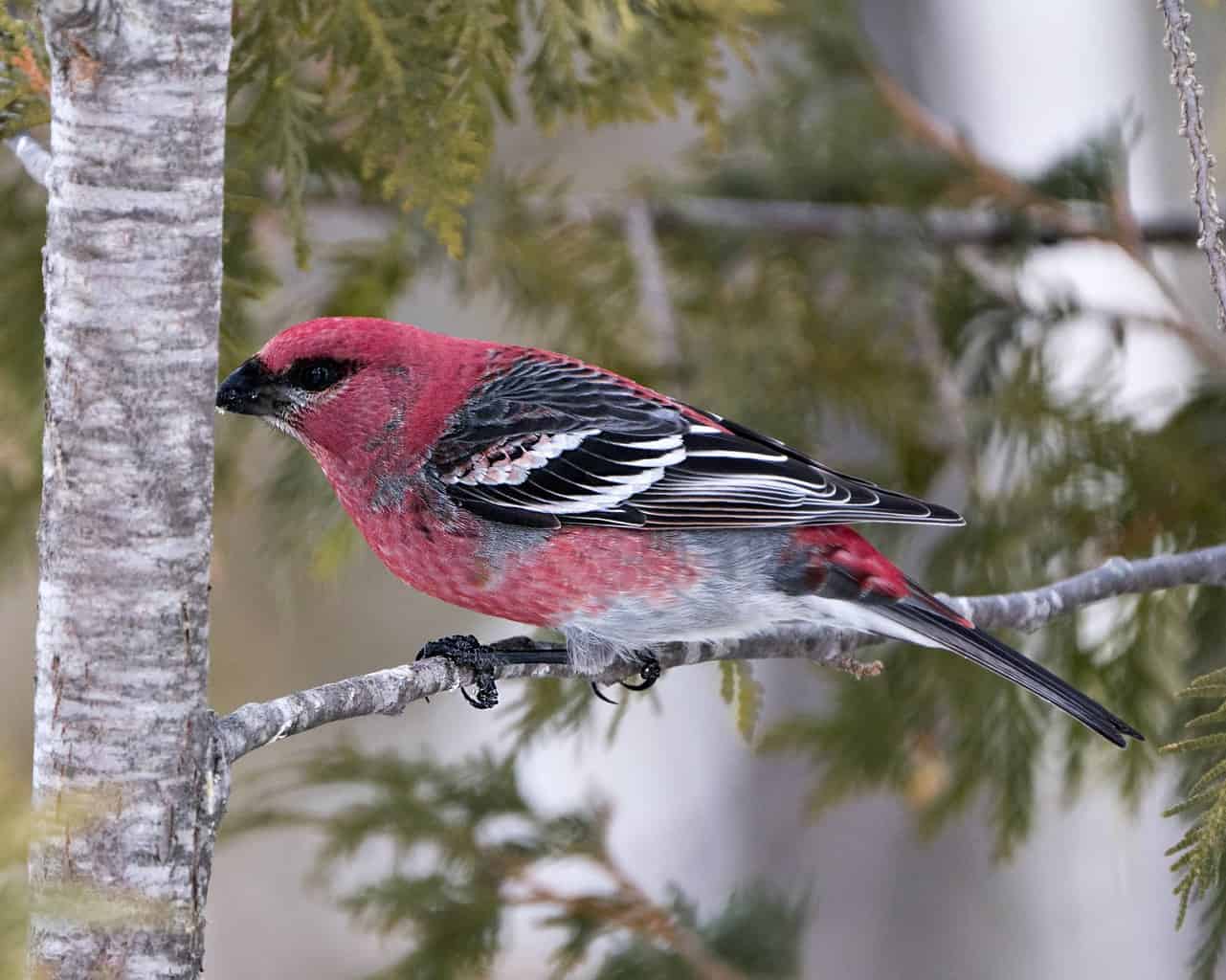
- Scientific Name: Pinicola enucleator
- Length: 9 to 10 inches
- Weight: 1.8 to 2.8 ounces
- Wingspan: 12 to 13 inches
Pine grosbeaks are mostly reddish-pink, with some gray on the wings and tail. These birds are uncommon almost everywhere except for fir and spruce forests.
What’s striking about Pine grosbeaks is how tame they are. These birds will allow humans or predators to approach them without batting an eye. However, most birders and predators don’t see them because they are so confidently motionless during contact.
Their diet consists of berries, insects, seeds, and buds. They forage in shrubs and up in trees. During nesting, they forage in flocks.
Rose-Breasted Grosbeak
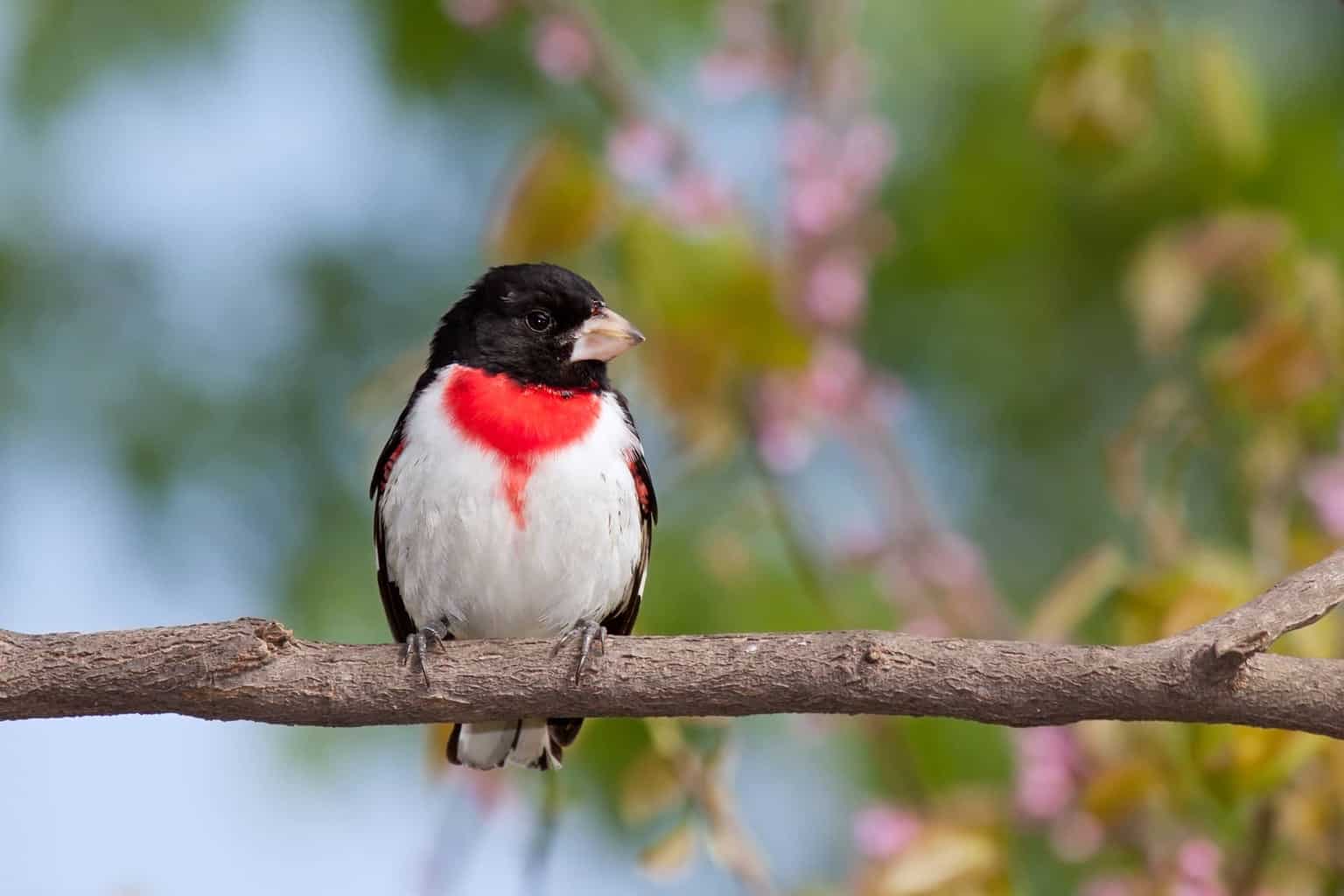
- Scientific Name: Pheucticus ludovicianus
- Length: 7.1 to 8.7 inches
- Weight: 1.2 to 2.3 ounces
- Wingspan: 11 to 13 inches
Rose-breasted grosbeaks are distinguishable by the brilliant red patch on their chests. They’re mostly black and white. The females are streaked with brown and yellow.
You can find these birds in leafy woodlands but also look for them in orchards and woodland edges. Birdwatchers often describe their voice as a better version of an American robin’s song.
They eat mostly insects, although berries can be especially important to survive cold winters. They forage high in the trees and among the foliage. Grosbeaks will often catch insects mid-flight.
Blue Birds in Wisconsin
Eastern Bluebird
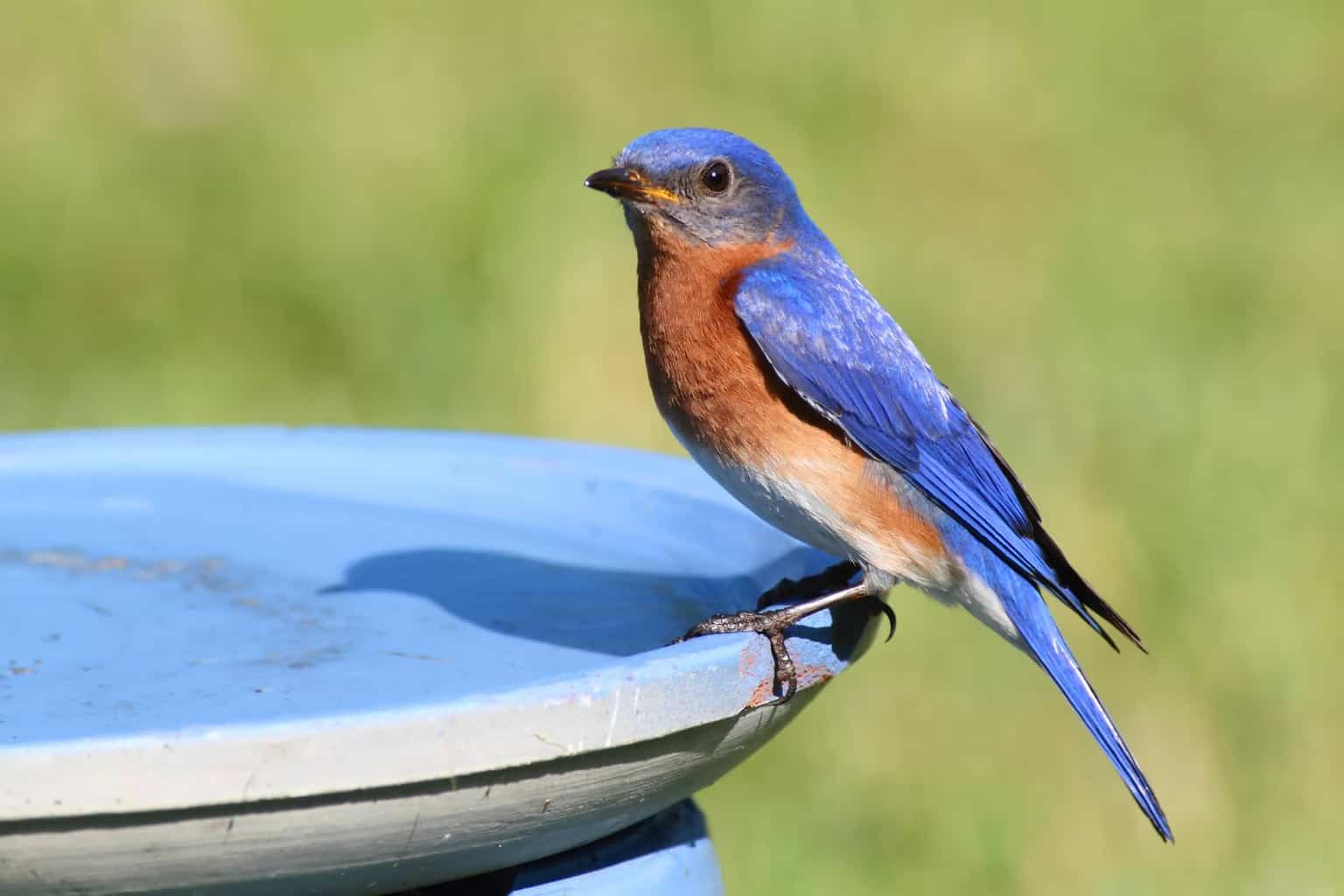
- Scientific Name: Sialia sialis
- Length: 6.3 to 8.3 inches
- Weight: 0.95 to 1.2 ounces
- Wingspan: 9.8 to 12.6 inches
Eastern bluebirds have attractive, vivid blue plumage. Their underparts are rusty with bluish wings.
Look for Eastern bluebirds in semi-open habitats, forest clearings, and burned areas. These birds reside on farms and roadsides or roam the countryside looking for birdhouses.
They catch insects mid-flight and feed on berries. Crickets, beetles, and grasshoppers are their favorite foods, although most insects are delicious to them.
During the breeding season, the male tries to impress the female by singing and fluttering in front of her. The female usually builds the nest, and both parents help feed the chicks.
Blue-Gray Gnatcatcher
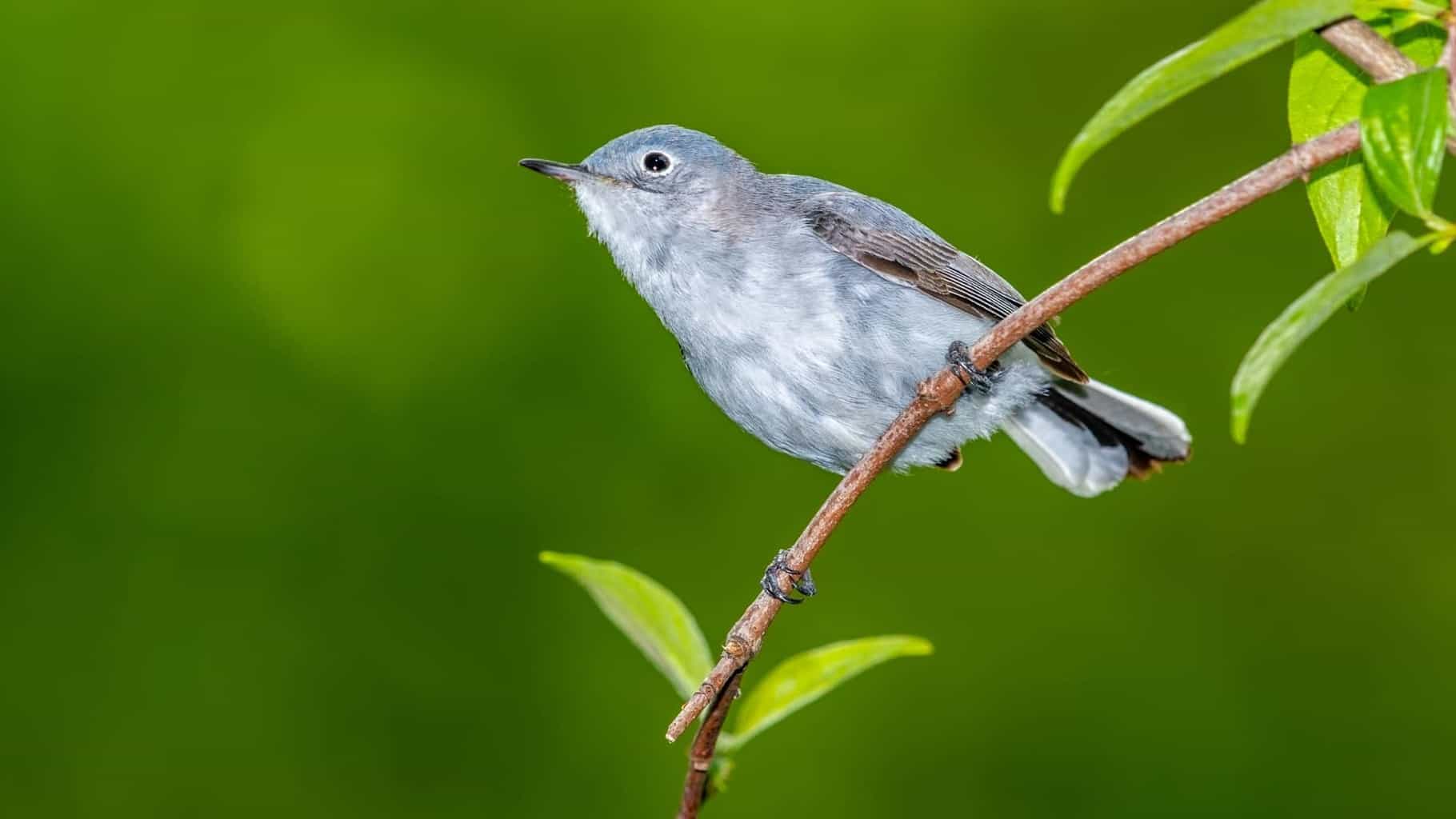
- Scientific Name: Polioptila caerulea
- Length: 3.9 to 5.1 inches
- Weight: 0.18 to 0.25 ounces
- Wingspan: 6.3 inches
These small birds have pale blue plumage mixed with light gray underparts. Their tails are mostly black.
You can find these birds mostly in oak and pines, but they usually reside in any type of deciduous forest.
Their diet consists primarily of insects. Treehoppers and leafhoppers are their favorite. Other insects include flies, caterpillars, spiders, and small wasps. Like many other birds, they like to catch the insect mid-flight and snap it up while flying.
They forage in the shrubs and high in the trees. Interestingly, these birds put up a fight against larger insects, beating them against a branch before snapping them up with their bills and eating them.
Indigo Bunting
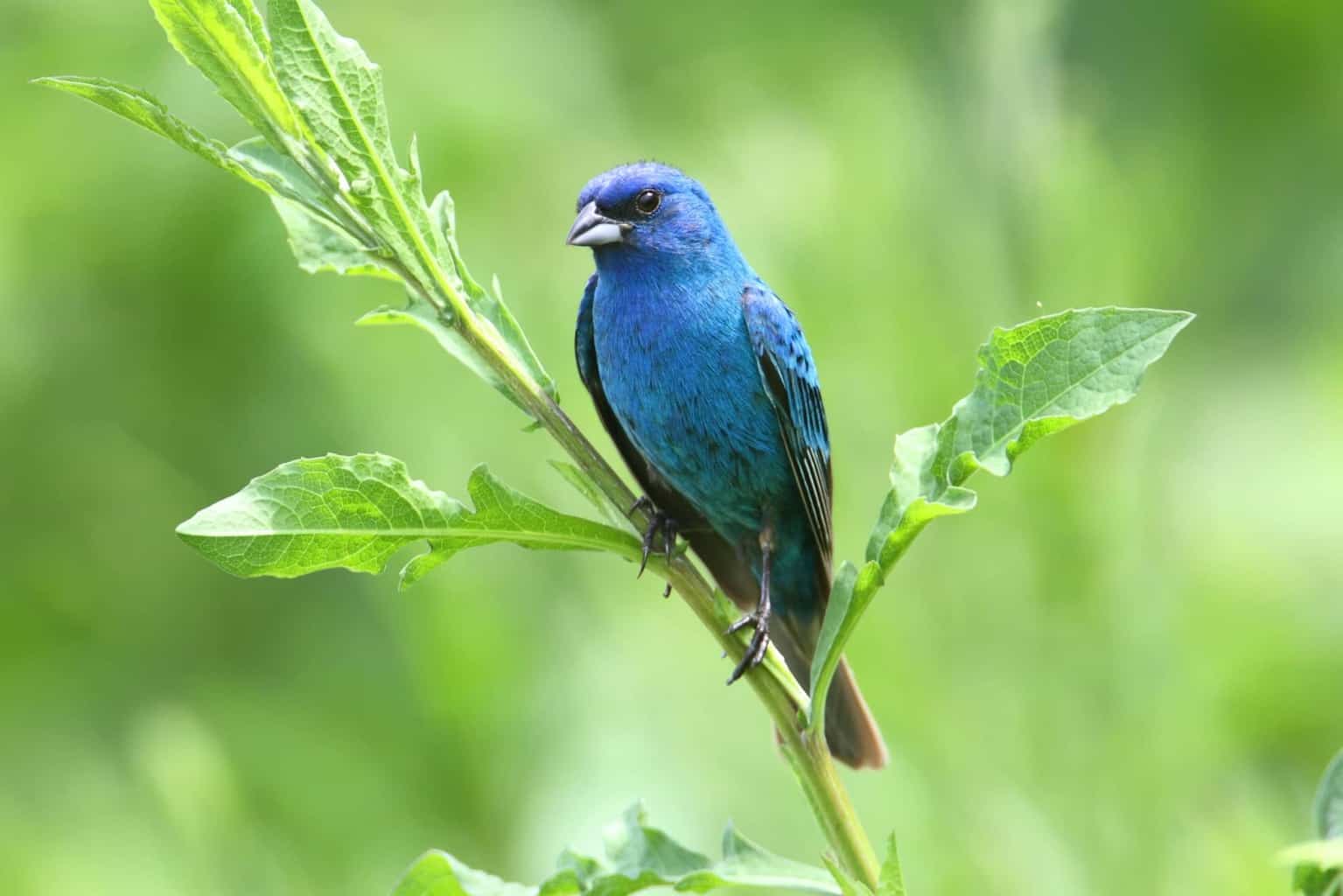
- Scientific Name: Passerina cyanea
- Length: 4.5 to 5.9 inches
- Weight: 0.4 to 0.75 ounces
- Wingspan: 7.1 to 9.1 inches
Indigo buntings are jewel-blue, with some parts bluer than others. They have a grayish-silver bill. The females are mostly brown with darker streaks on their wings.
You’ll find these birds spread out near woodland edges. Brushy pastures and roadsides are also common habitats.
Their diet consists mainly of insects and seeds. They love insects during the breeding season but switch to a seed-based diet during winter.
The male looks for nesting spots during spring. After settling on one, he establishes his territory and defends it against other males.
Buntings enjoy a monogamous relationship; they’re always faithful to their partners. But, it’s not uncommon for the male to have multiple partners throughout his lifetime.
Green Birds in Wisconsin
Ruby-Crowned Kinglet
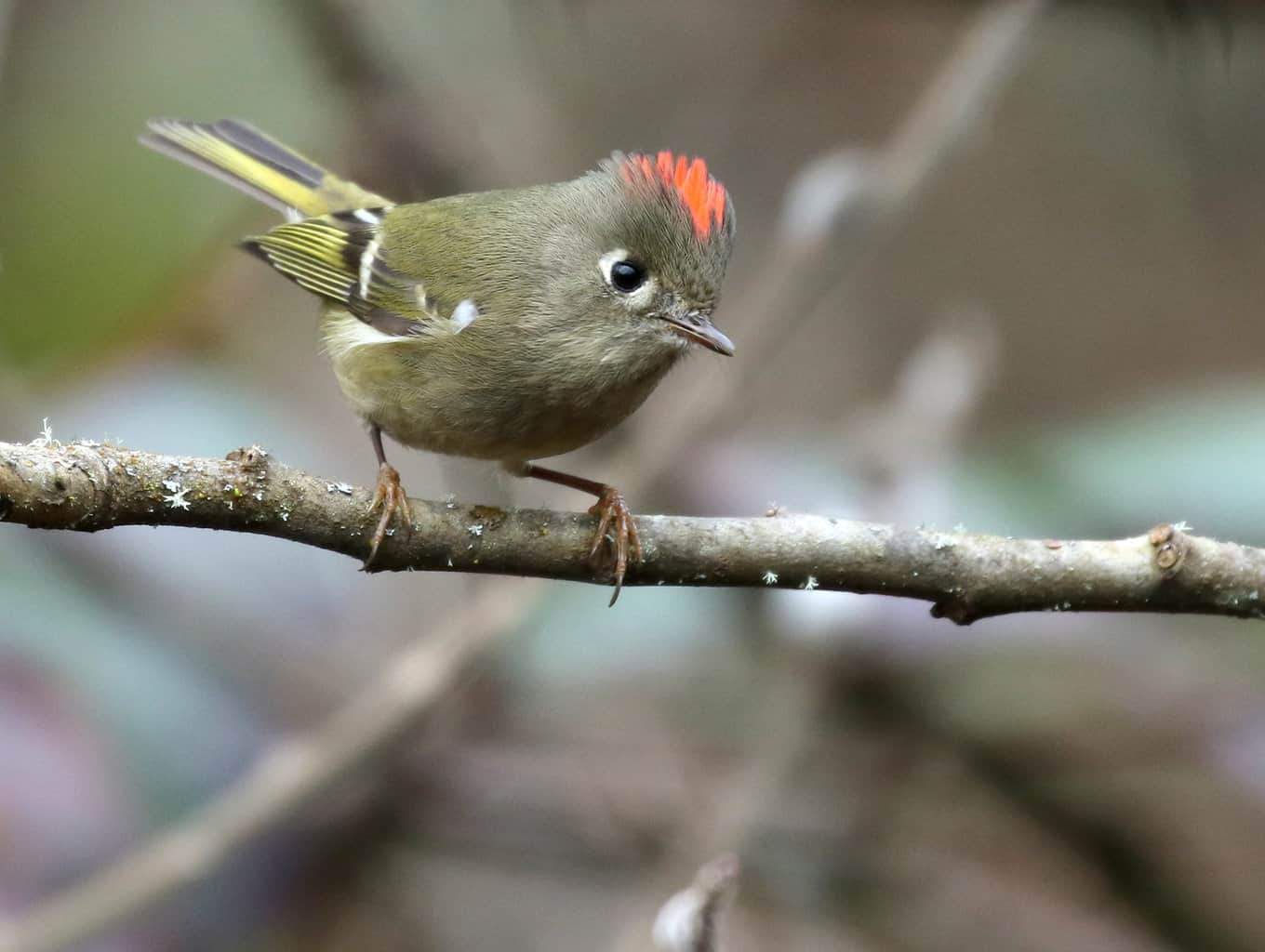
- Scientific Name: Regulus calendula
- Length: 3.5 to 4.3 inches
- Weight: 0.2 to 0.4 ounces
- Wingspan: 6.3 to 7.1 inches
Ruby-crowned kinglets are green birds with a tint of olive. They have white wings with black streaks on them.
You can find these birds in different places, depending on the season. Look for them in coniferous forests, including pine, Douglas fir, and spruce woods, during the summer. In the winter, their habitats expand to mixed woods and streamside thickets.
Their diet primarily consists of insects. They love small beetles, caterpillars, flies, and many more crawly creatures. Their diet shifts to berries and some seeds during the winter. These birds also like to suck the sap from flowers.
Eastern Wood-Pewee

- Scientific Name: Contopus virens
- Length: 5.9 inches
- Weight: 0.3 to 0.7 ounces
- Wingspan: 9.1 to 10.2 inches
Eastern wood-pewees are green birds with darker wings. They have yellowish-white underparts with dark side breasts.
These birds are fairly common. You can find them across woodlands, meadows, ponds, and roadsides. They prefer forest edges during winter.
Wood-pewees like to eat insects. Even in winter, they don’t eat a lot of berries or seeds. They especially like wasps and bees but also eat moths, beetles, grasshoppers, and spiders.
During nesting season, the male establishes his nesting site and sings a song to let other males know it’s his territory. The male will sometimes chase the female so that she will accept him. The female builds the nest, and both parents feed the nestlings.
Warbling Vireo
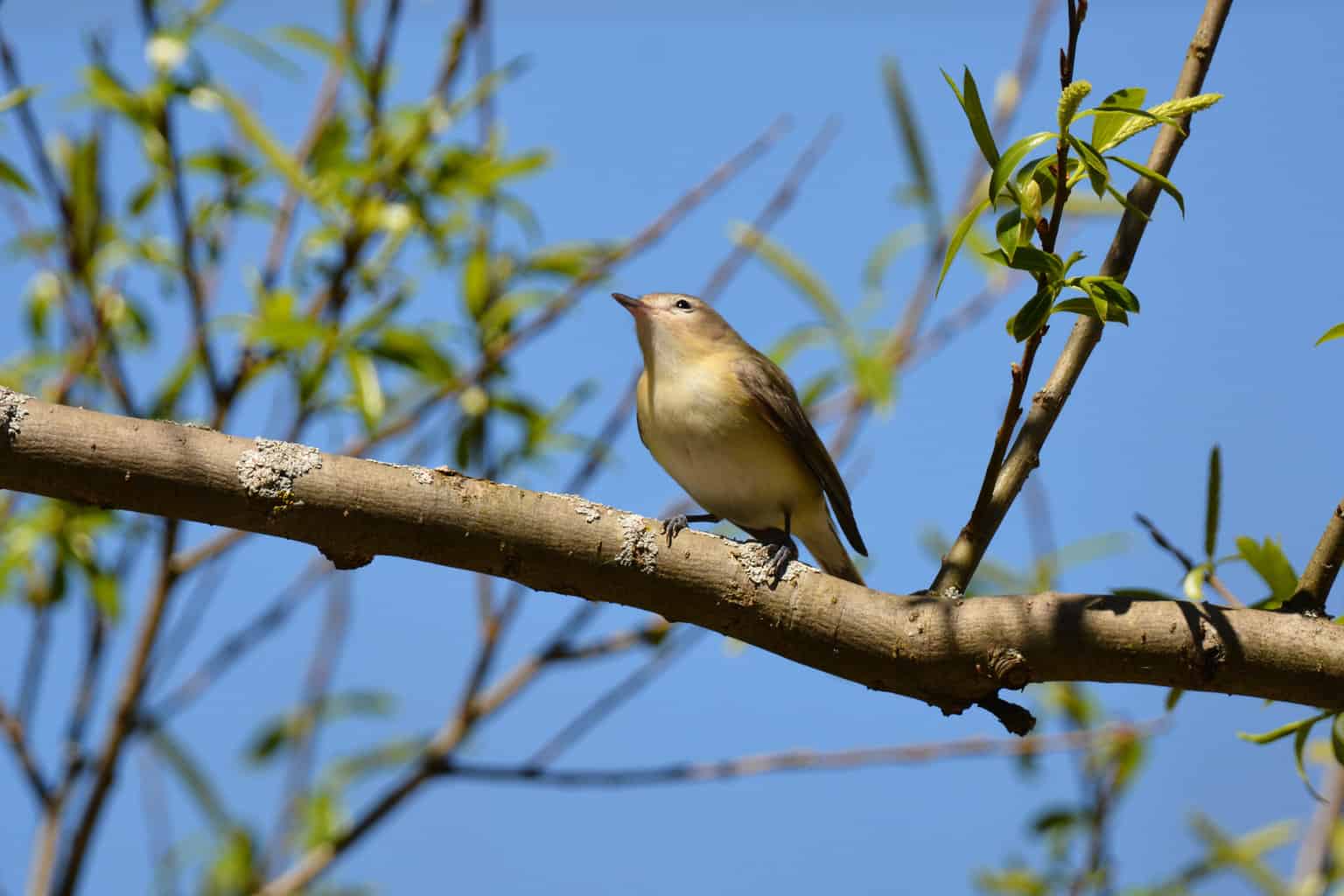
- Scientific Name: Vireo gilvus
- Length: 4.7 to 5.1 inches
- Weight: 0.3 to 0.6 ounces
- Wingspan: 8.7 inches
Warbling vireos have green and gray plumage with yellowish-white undersides. Look for them in deciduous and mixed woods. They’re also found in orchards and towns with a lot of trees.
These birds forage in the trees and shrubs. Their diet is mainly insects and berries. Their favorite insects are caterpillars, but beetles, flies, and grasshoppers are also favorites. They mainly eat insects during the breeding season and switch to berries during winter.
The male picks a nesting site and sings a song to let other birds know that this is his territory. When he spots a female, he hurriedly struts with his tail fanned and wings spread to express interest. It’s almost as if the male is going for a hug.
Orange Birds in Wisconsin
Baltimore Oriole
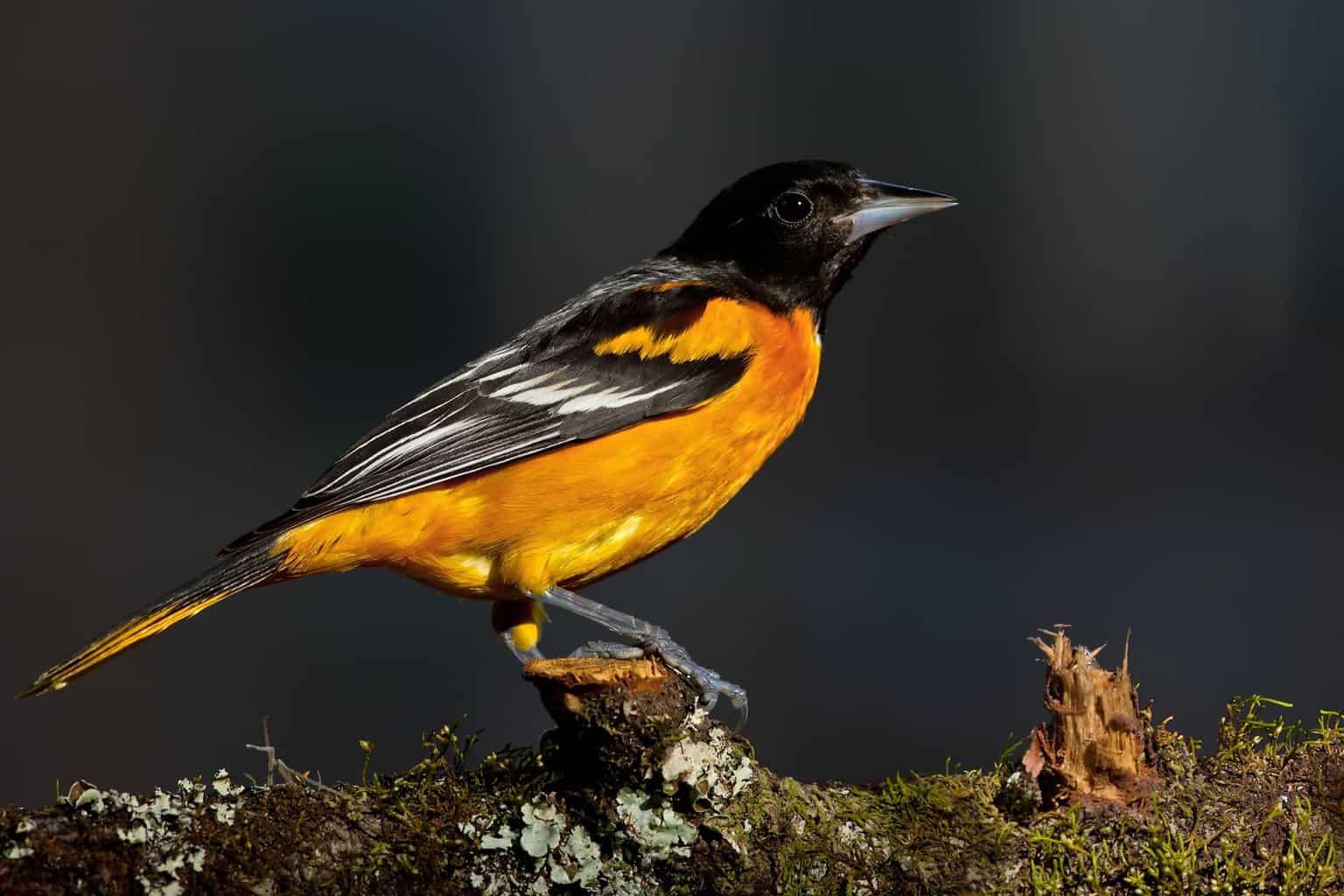
- Scientific Name: Icterus galbula
- Length: 6.7 to 7.5 inches
- Weight: 1.1 to 1.4 ounces
- Wingspan: 9 to 12 inches
Baltimore orioles have an orange plumage with black-colored heads, backs, and wings. Their wings are streaked with white.
You can find these birds in open woods, elms, and riversides. They like to eat berries and insects and suck the sap out of flowers. Their favorite insects are caterpillars. Many birds steer clear of hairy insects, but these birds seem to love them.
American Robin

- Scientific Name: Turdus migratorius
- Length: 8 to 11 inches
- Weight: 2.7 to 3 ounces
- Wingspan: 12 to 16 inches
American robins are some of the most popular birds in the United States. They’re similarly colored to the Baltimore orioles; orange plumage with black-colored heads and backs.
They’re more common than orioles. You can find them in towns, cities, farmlands, and your own backyard.
They feed on insects and berries, but they especially love to eat earthworms. Younglings are also fed earthworms whenever they’re available, while the adults switch to berries for the cold winters.
Virginia Rail

- Scientific Name: Rallus limicola
- Length: 7.9 to 10.6 inches
- Weight: 2.3 to 3.4 ounces
- Wingspan: 12.6 to 15 inches
You can find Virginia rails widespread in fresh marshes. This also extends to salt marshes in the winter.
These birds have a distinct call, described by birdwatchers as the “kicker call.” It’s mainly grunting noises, but you’ll more commonly hear a Virginia rail than see it.
Their diet is mostly insects, seeds, and snails. They also feed on larvae, crayfish, snails, and other small insects. The male usually departs once the younglings hatch, while the female stays till they’re independent.
Yellow Birds in Wisconsin
Nashville Warbler

- Scientific Name: Leiothlypis ruficapilla
- Length: 4.3 to 5.1 inches
- Weight: 0.2 to 0.5 ounces
- Wingspan: 6.7 to 7.9 inches
You’ll often see this bright yellow bird foraging in young trees and thickets. They’re fairly common in most woodlands, but they favor spruce and cedar woods.
They subsist solely on insects, eating caterpillars, leafhoppers, beetles, and more. They also eat insect larvae and eggs.
Although widespread, it’s still not known how exactly these warblers breed. Most likely, the male sings to attract the female and sometimes does an aerial dance. The female builds a well-hidden nest and mostly feeds the nestlings.
American Goldfinch
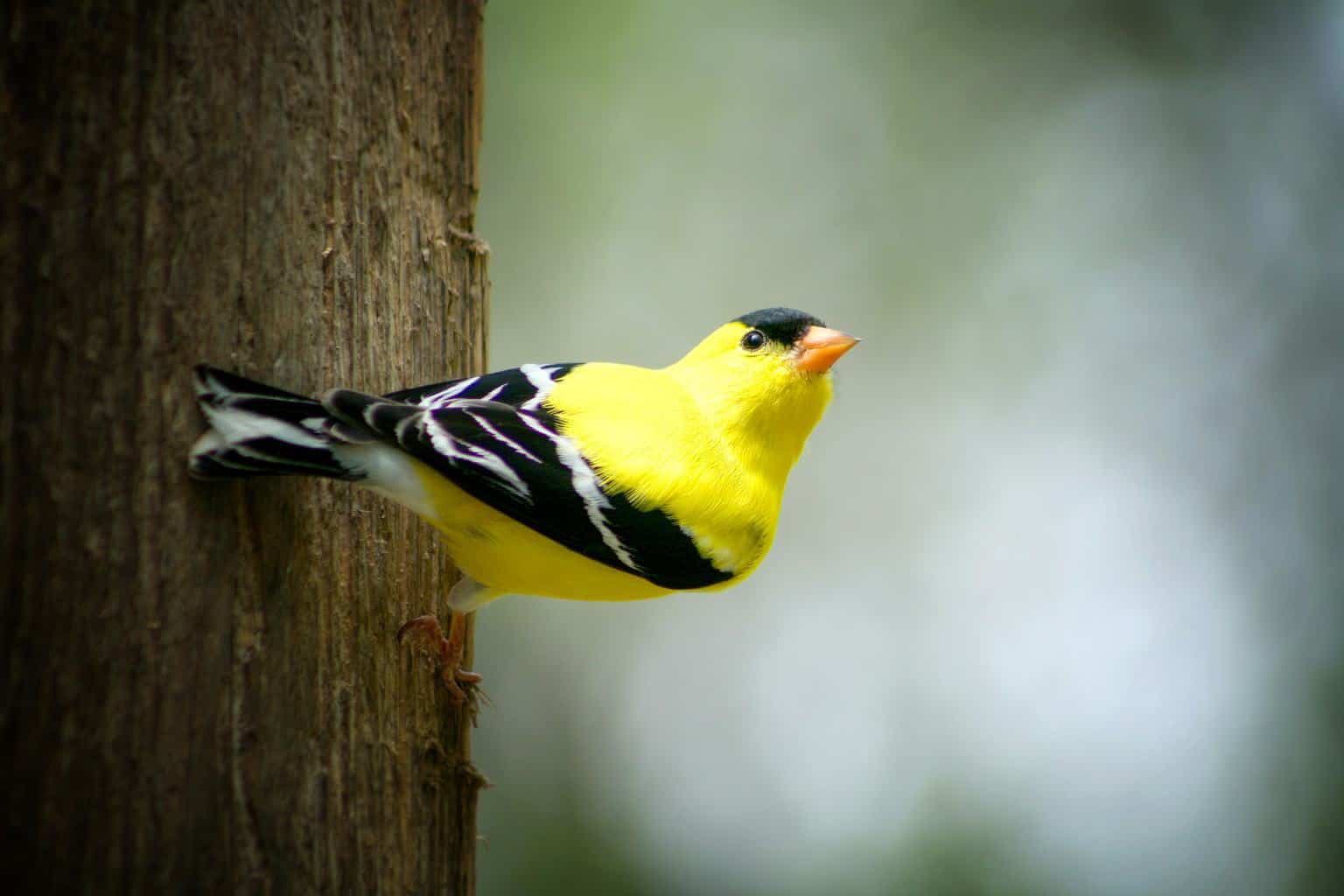
- Scientific Name: Spinus tristis
- Length: 4.2 to 5.4 inches
- Weight: 0.39 to 0.71 ounces
- Wingspan: 7.4 to 8.8 inches
American goldfinches are extremely common throughout the country. You can find them around roadsides, woodlands, streamsides, and suburban areas.
Goldfinches like to eat seeds more than insects. They love birch, elm, and alder but also eat young twigs and buds.
The male attracts the female by singing and performing an aerial display. The female builds the nest better than most other bird types. Birdwatchers say it’s so well-built that it wouldn’t leak water!
Yellow Warbler
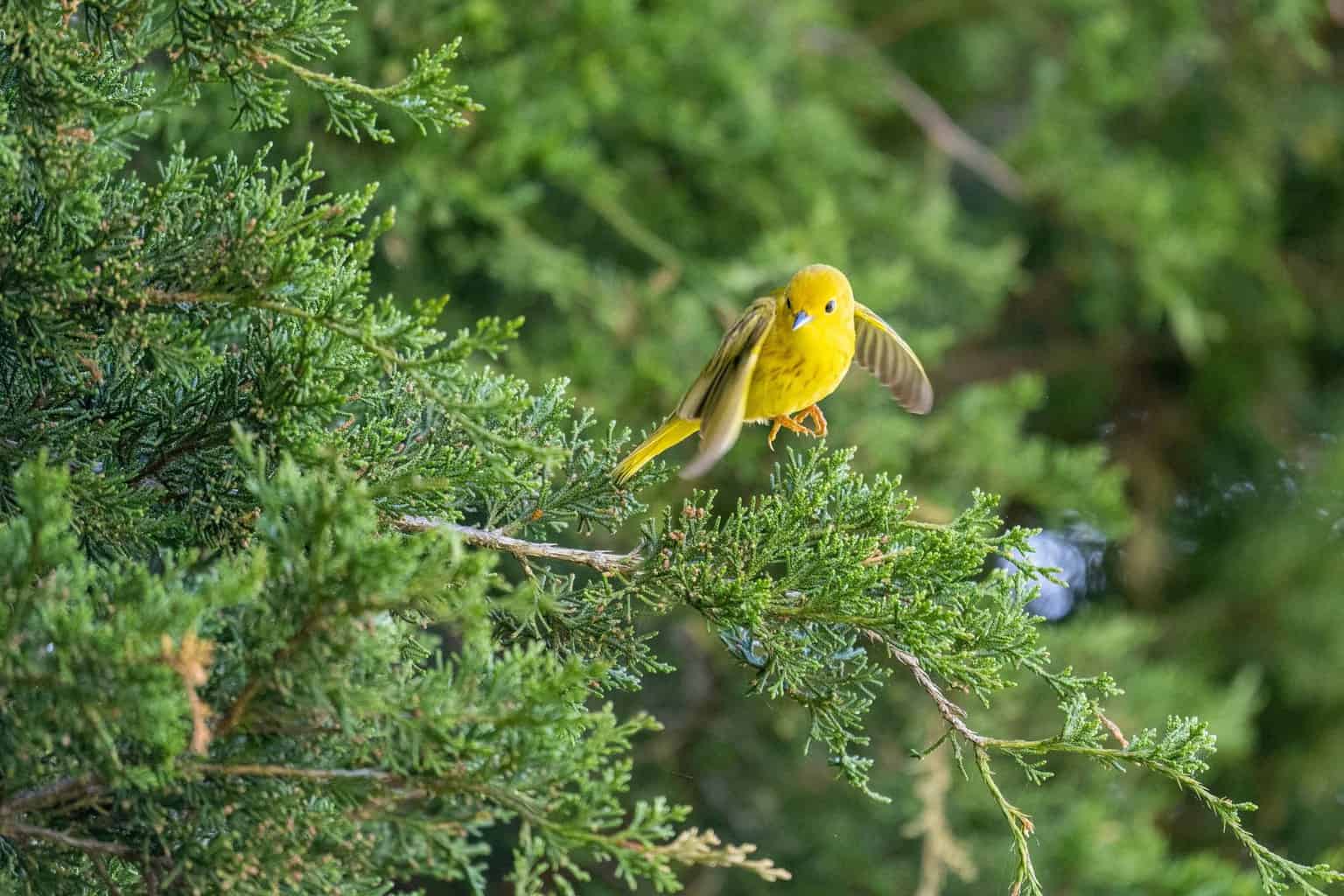
- Scientific Name: Setophaga petechia
- Length: 4.7 to 5.1 inches
- Weight: 0.3 to 0.4 ounces
- Wingspan: 6.3 to 7.9 inches
It’s extremely likely that you’ve heard the sweet song of a Yellow warbler before. These musical, sweeter chips are heard from Mexico to the Arctic Circle.
You can find these warblers in thickets, bushes, streams, gardens, and more. They prefer to be around moisture-loving plants but can also be found in orchards and roadsides.
Their diet is mainly insects. During nesting season, the female builds the nest, and both parents feed the nestlings (although the female works more).
Palm Warbler
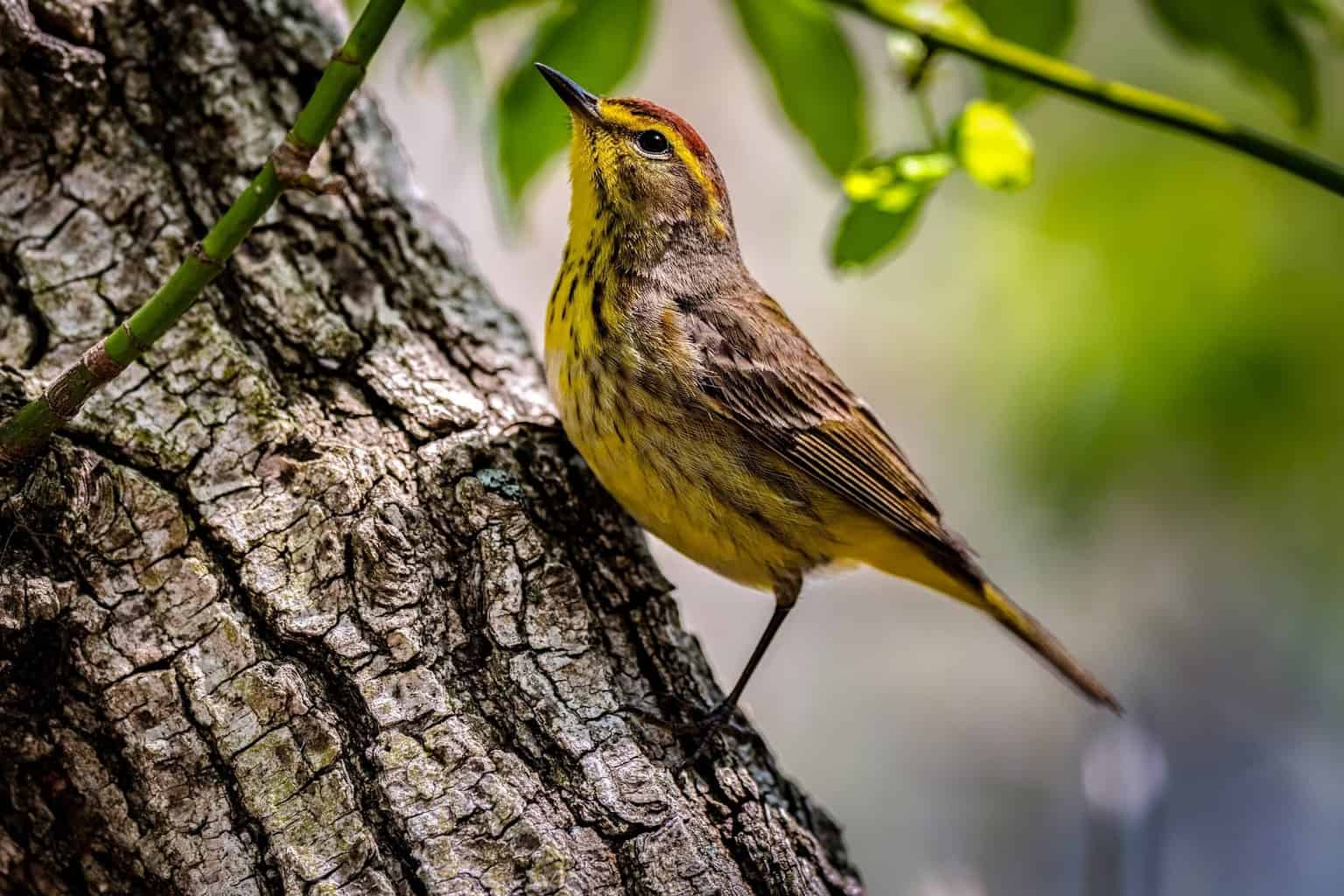
- Scientific Name: Setophaga palmarum
- Length: 4.7 to 5.5 inches
- Weight: 0.3 to 0.5 ounces
- Wingspan: 7.9 to 8.3 inches
Palm warblers are only marginally smaller than Yellow warblers, and they’re found in similar habitats. They mainly feed on insects but also eat a significant amount of vegetable matter.
Male Palm warblers can have more than one mate. Each female hatches around two broods each year, and the nestlings are able to leave after only 12 days.
Other Birds in Wisconsin
White-Breasted Nuthatch
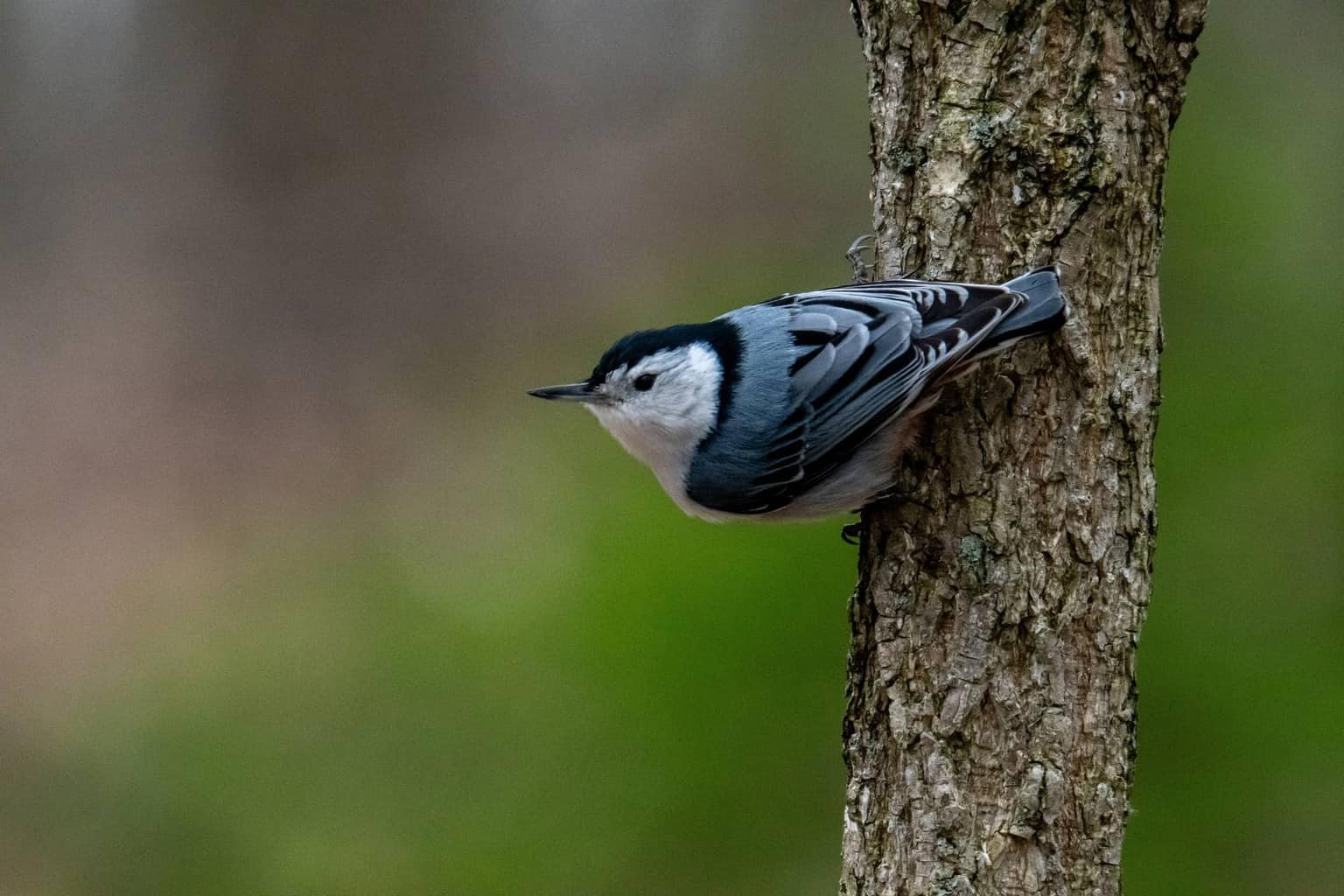
- Scientific Name: Sitta carolinensis
- Length: 5.1 to 5.5 inches
- Weight: 0.6 to 1.1 ounces
- Wingspan: 7.9 to 10.6 inches
White-breasted nuthatches have been steadily increasing due to bird feeders. They’re attracted to suet and sunflower seeds. You can find these birds widespread across forests and along rivers and roads.
Their diet consists mainly of seeds and insects. Spiders are a lovely treat for the nuthatches. During summers, they almost never eat seeds. However, in winter, seeds can make up over 60% of their diet.
Dark-Eyed Junco
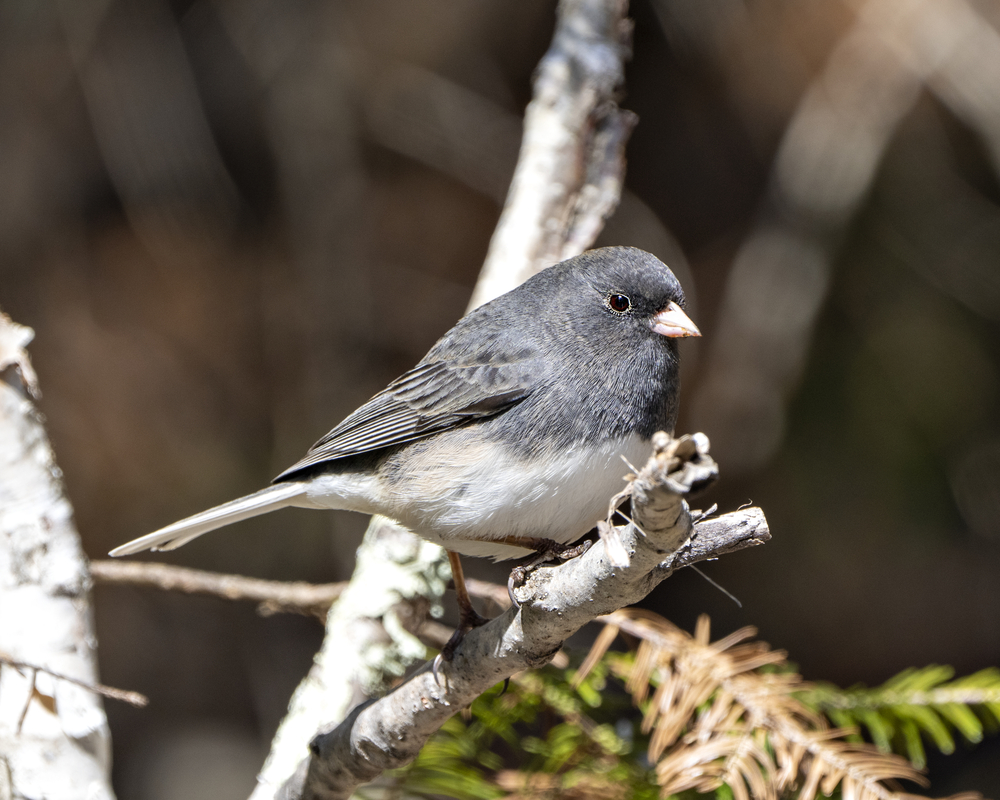
- Scientific Name: Junco hyemalis
- Length: 5.1 to 6.9 inches
- Weight: 0.63 to 1.06 ounces
- Wingspan: 7.1 to 9.8 inches
Juncos are generally brown or dark gray. They have pink bills and white tails. You can find them in open or mixed woods and along roadsides and clearings.
During summer, half of their diet consists of insects. These include grasshoppers and spiders. During winter, their diet shifts to seeds and berries.
The nesting site is always well-hidden on the ground. Both parents feed the young.
Mourning Dove

- Scientific Name: Zenaida macroura
- Length: 9.1 to 13.4 inches
- Weight: 3.4 to 6 ounces
- Wingspan: 17.7 inches
The Mourning dove is perhaps the most familiar bird in North America. It has a distinguishable cooing sound and is found abundantly across all habitats.
Mourning doves go where bird feeders are. They adapt quickly to man-altered land and eat seeds exclusively. Sometimes, these doves will eat small gravel to be able to digest hard seeds better.
The male attracts the female by creating noisy wingbeats, gliding, and diving around the female. The male helps build the nest by gathering the material, but the nest is usually flimsy and made mostly from twigs.
Green Heron
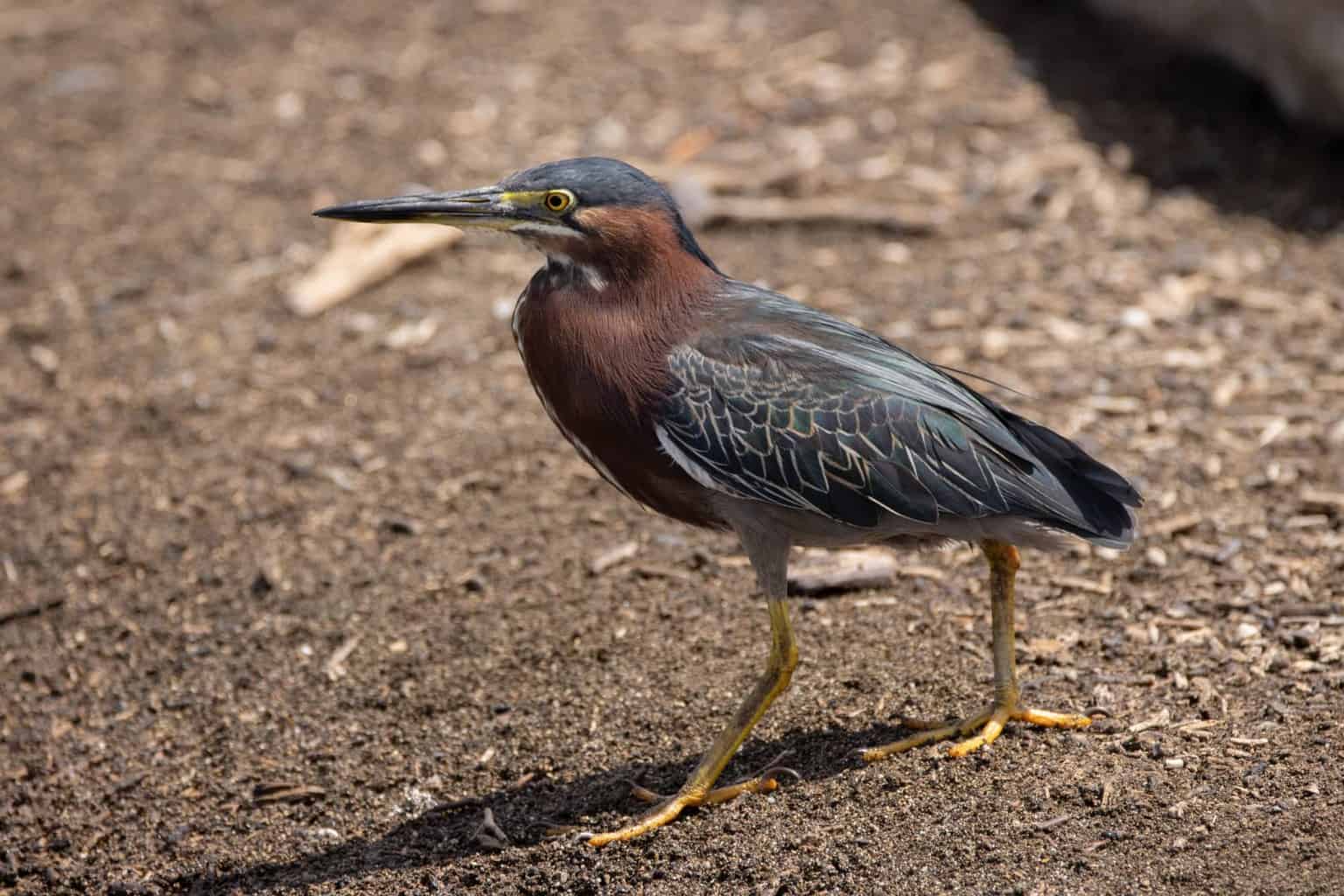
- Scientific Name: Butorides virescens
- Length: 16.1 to 18.1 inches
- Weight: 8.5 ounces
- Wingspan: 25.2 to 26.8 inches
The Green heron appears lonely to birdwatchers. He walks along riverbanks or quiet streams letting out his signature “kyow” sound.
These birds have beautiful green backs with rusty chests and necks. They mostly eat fish and other crustaceans. Sometimes, they feed on snakes, snails, grasshoppers, and even small rodents.
The male looks for a nesting spot and calls for a female. When a female finds the male, they both engage in an aerial display around the established territory. The male begins building the nest and then the female finishes it up.
Cooper’s Hawk

- Scientific Name: Accipiter cooperii
- Length: 14.6 to 15.3 inches
- Weight: 7.8 to 14.5 ounces
- Wingspan: 24.4 to 35.4 inches
This medium-sized hawk has dark gray plumage with an orange underside. It’s known for being stealthy and powerful. You can generally find Cooper’s hawks in open woodlands and mature forests.
These stealthy hawks move from perch to perch, looking for their prey. Then, they use speed and the power of their claws to sweep the prey off the ground.
The female takes care of the young while the male brings them food. They feed on small mammals and birds.
Spotted Sandpiper

- Scientific Name: Actitis macularius
- Length: 7.1 to 7.9 inches
- Weight: 1.2 to 1.8 ounces
- Wingspan: 14.6 to 15.8 inches
Sandpipers aren’t usually seen in the east. However, Spotted sandpipers make their way to Wisconsin in the summer. They’re often seen at marshes, ponds, and lakeshores.
Spotted sandpipers are rarely seen in flocks. During the breeding season, things get a little complicated. The females are noticeably larger and stronger than the males.
The female accepts the male, who puts up a good fight. She can have up to five mates during a single season.
Every time a female lays eggs, she leaves the male to incubate them and take care of the nestlings. The young are able to feed themselves soon after they hatch.
Common Tern

- Scientific Name: Sterna hirundo
- Length: 12.2 to 15 inches
- Weight: 3.3 to 7 ounces
- Wingspan: 29.5 to 31.5 inches
Terns are widespread across the continent. You can find Common terns by lakes, bays, and beaches. They prefer aquatic habitats, especially in the summer. They move to tropical waters in the winter to enjoy a warmer climate.
Common terns love feeding on fish and other crustaceans. It makes up their whole diet. They eat shrimps, squids, and marine worms.
Mating occurs after an aerial courtship. Then, the male offers fish to the female. Both birds build the nest. Both parents also take turns feeding the young.
Short-Eared Owl

- Scientific Name: Asio flammeus
- Length: 13.4 to 16.9 inches
- Weight: 7.3 to 16.8 ounces
- Wingspan: 33.5 to 40.5 inches
Short-eared owls are more common than other owls because they prefer open terrain, like marches or prairies. They’re active during the daytime and evening.
These owls feed mainly on rodents. Voles, deer mice, lemmings, and other rodents are a favorite. They can also eat birds, rabbits, and, sometimes, bats.
During the breeding season, the male shoots in the air and hovers around the female. Then, he dives to the ground while clapping his wings. The nest is built in the soil by the female. The male brings the food and gives it to the female to feed the young.
Closing Thoughts
Wisconsin is packed with beautiful birds throughout the state. If you’ve followed our article closely, you now have a wide range of exciting birds to observe and document on your next birdwatching journey.

